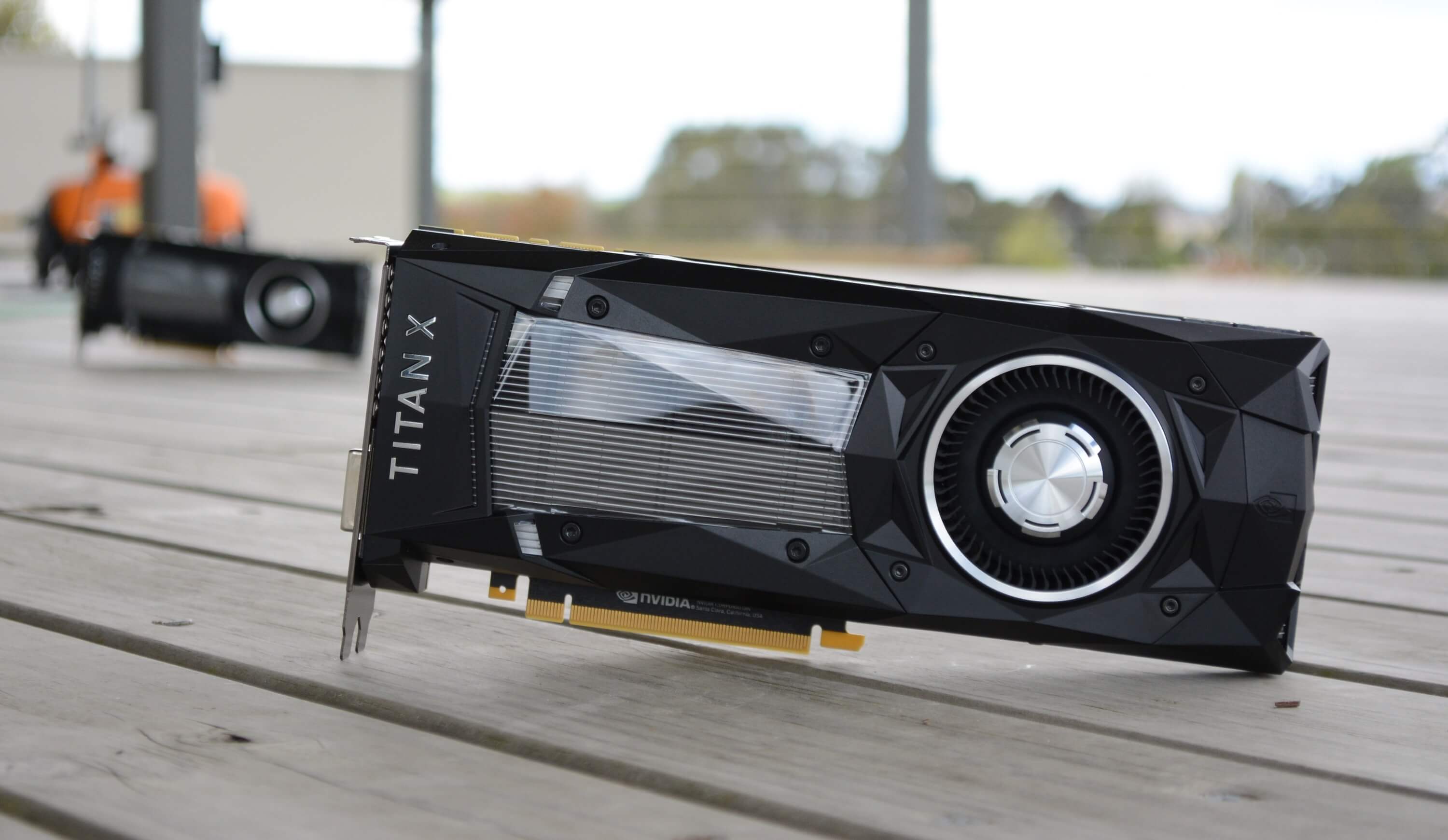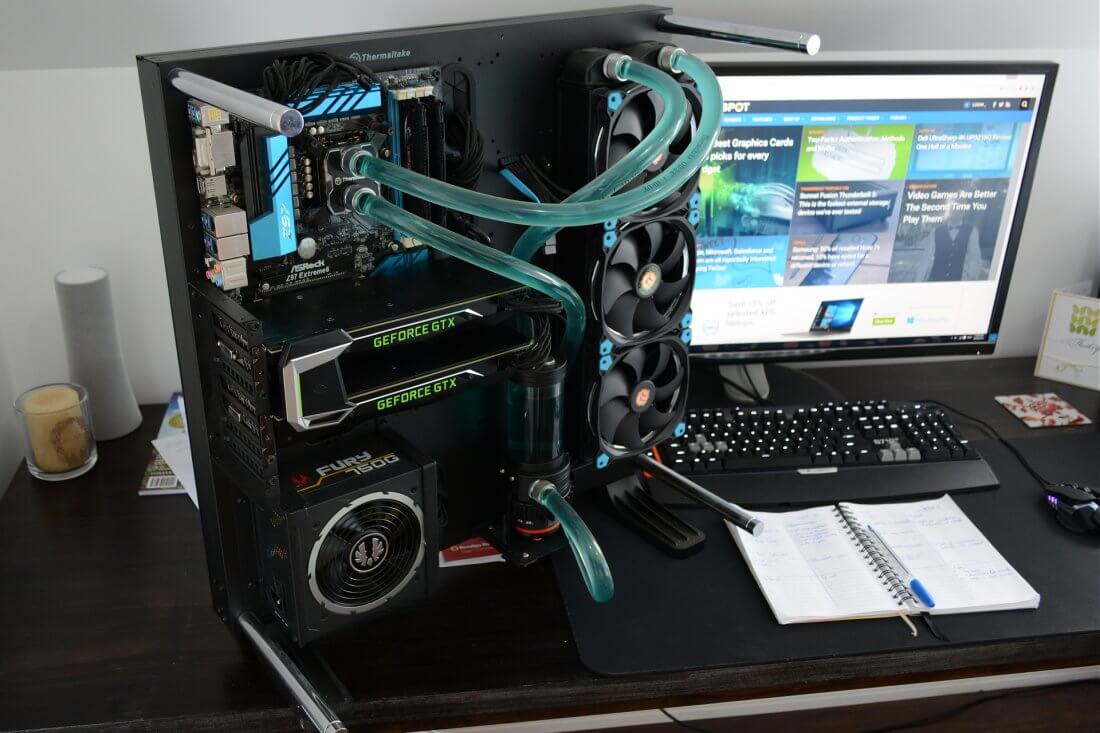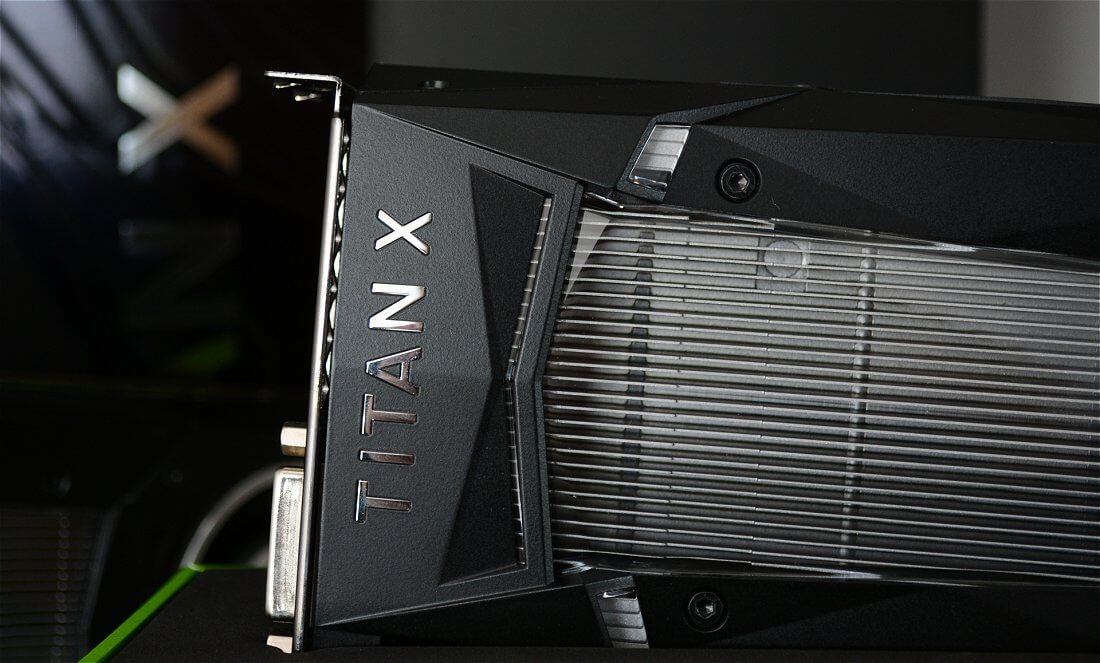For some time now the most popular screen resolution among gamers has been 1080p, though the community is slowly but surely migrating to 1440p thanks to the increased availability of quality 1440p displays and affordable GPUs such as the Radeon RX 480 and GeForce GTX 1060 which are quite capable at this resolution.
But what about 4K gaming? Ultra HD displays have been around for a few years now and today it's possible to pick up a 28" 4K monitor for under $400. The reason so few gamers are going this route is because of the GPU power required to drive such a display.
Only recently with the arrival of the GTX 1080 has a single GPU been powerful enough to game at 4K and even then at times some tweaking is necessary for optimal gameplay. As impressive as the GTX 1080 is, Nvidia's latest Titan X boasts 40% more CUDA cores, making it all the more of an ally to 4K gamers.
The issue here, other than the card's confusing name, is the fact that it costs twice that of the GTX 1080. The MSRP is a staggering $1,200, for which you receive a 16nm Pascal GPU consisting of 12 billion transistors in a 471mm2 die.
This allows for a total of 3584 CUDA cores, all of which operate at a base clock speed of 1.4GHz, though GPU Boost 3.0 will often run much higher than that. Like the GTX 1080, the Titan X still uses GDDR5X memory but its bandwidth has been increased by 50% to 480GB/s courtesy of the 384-bit wide memory bus.
The Titan X should have no trouble providing highly playable performance at 4K in all of the latest triple-A titles. This got us thinking: how many 4K displays could a pair of Titan X SLI graphics cards drive?
In the past we've tested the most powerful dual GPU options available to see how they handled three extreme resolution displays. Back in 2011 for instance, we compared the GTX 590 and HD 6990 at 7680x1600 (triple 1600p). In other occasion we did all SLI and CrossFire pairings however that was when frame pacing became a big issue.
Today's testing will demonstrate the capabilities of dual-flagship setups including the Titan X and R9 Fury X at resolutions as high as 11520x2160 or three 4K displays. That's a shipload of pixels, but perhaps it won't be too heavy for $2,400 worth of graphics gear to haul.
Without further ado, let the benchmarks... begin!
Test System Specs
|
Benchmarks: Tom Clancy's The Division, Star Wars Battlefront
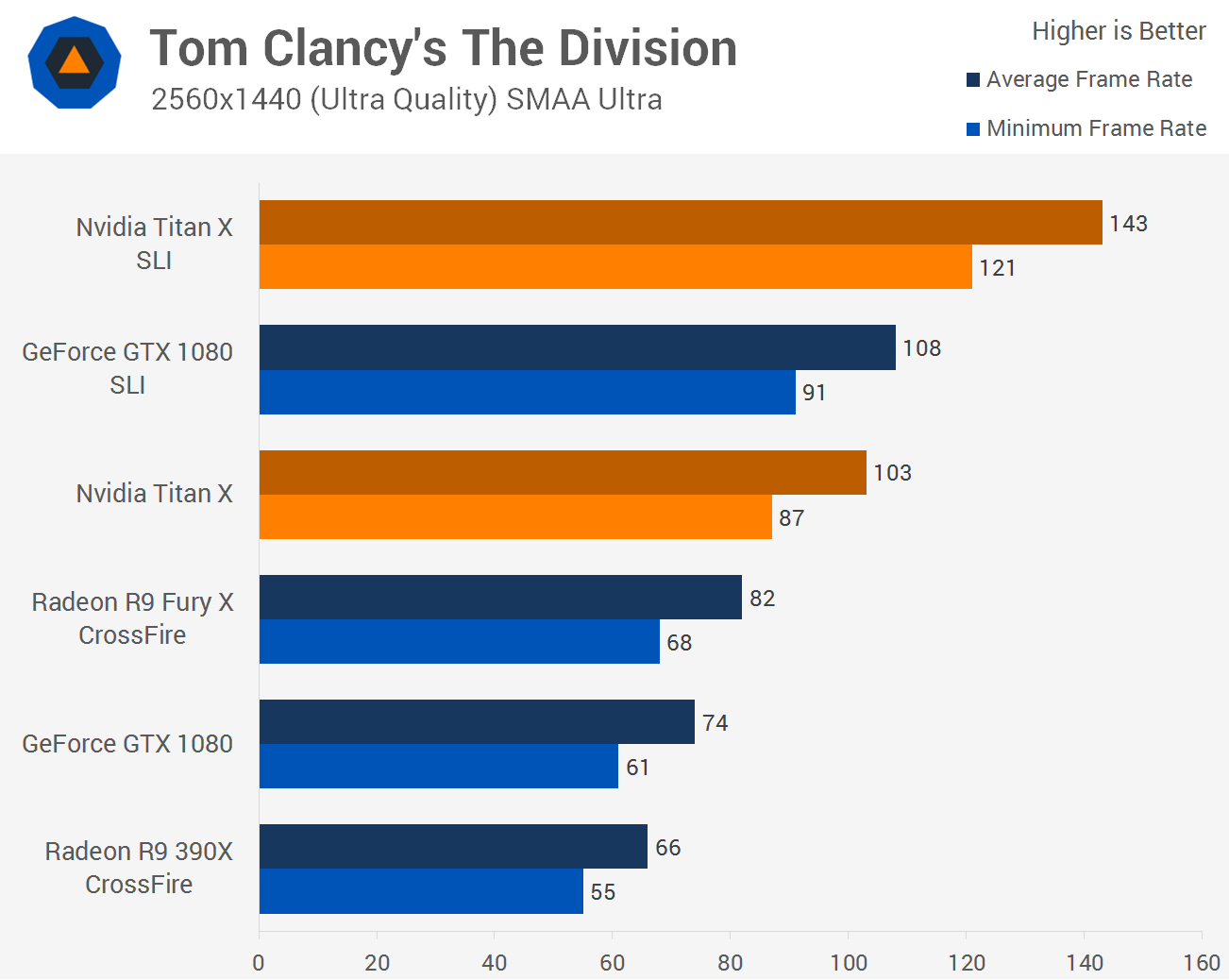
Using a single 1440p display, two Titan X graphics cards average 143fps with the minimum frame rate staying just above 120fps. This means the Titan X cards aren't even offering 40% scaling at 1440p, which is quite disappointing. That said, The Division has never offered great multi-GPU support. The weak SLI scaling also allowed a single Titan X to roughly match a pair of 1080s.
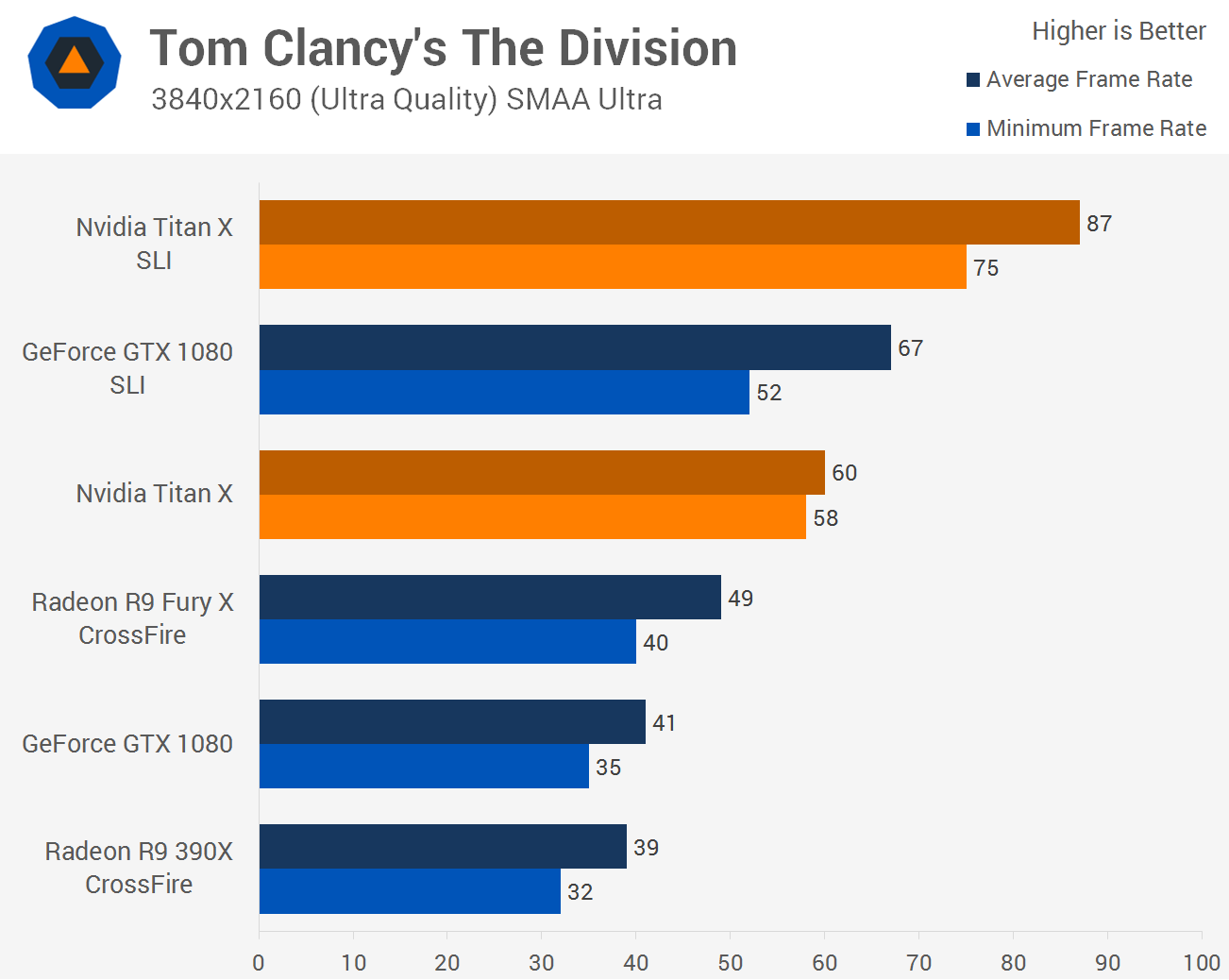
Scaling improves slightly at 4K as adding a second Titan X improved performance by 45%. Again this is weak but we have come to expect that in The Division.
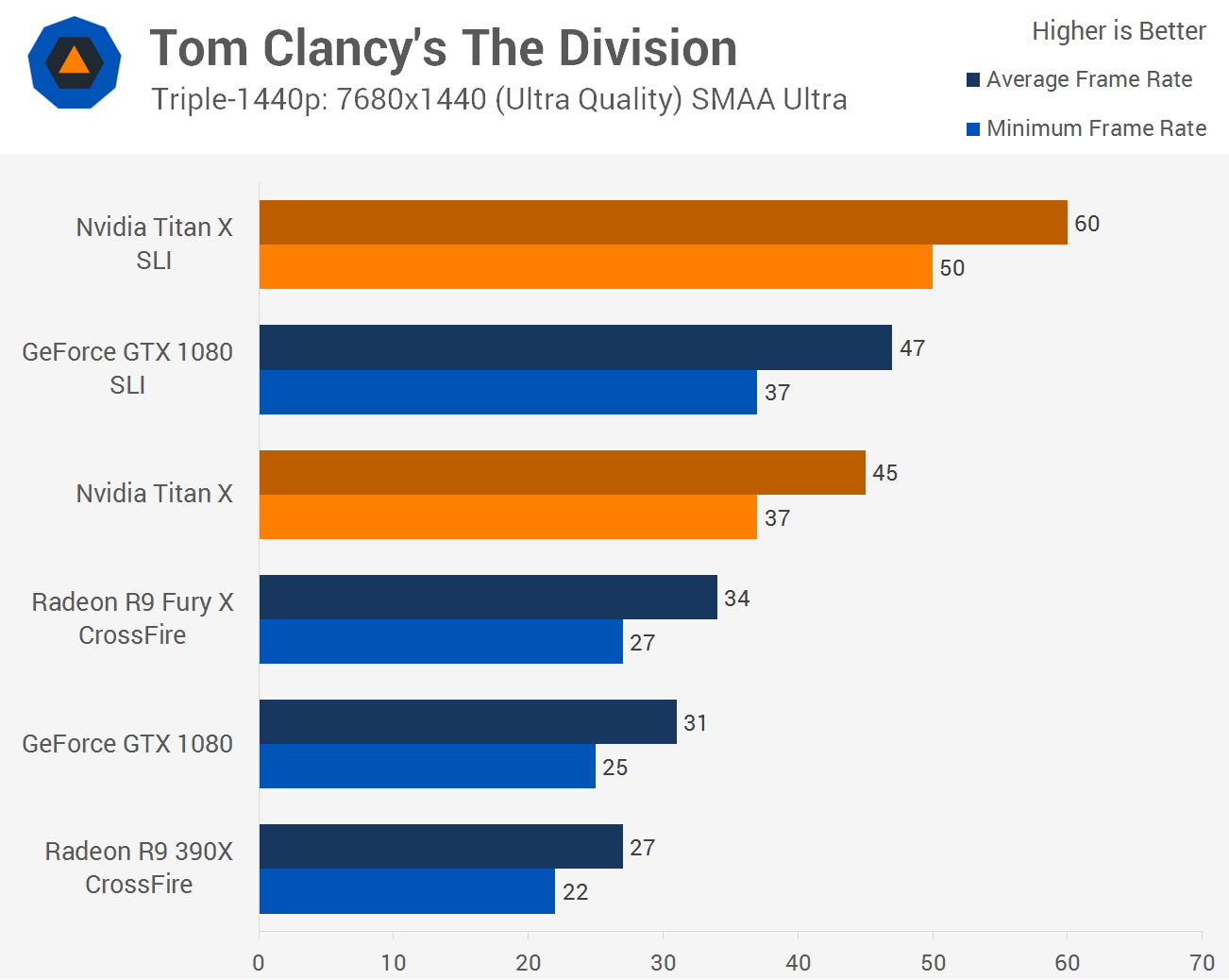
Running three 1440p displays still sees the dual Titan X cards deliver an average of 60fps with a minimum of 50fps. This is pretty impressive triple-1440p performance though it has to be said that SLI scaling over a single card was the weakest we have seen yet in this title.
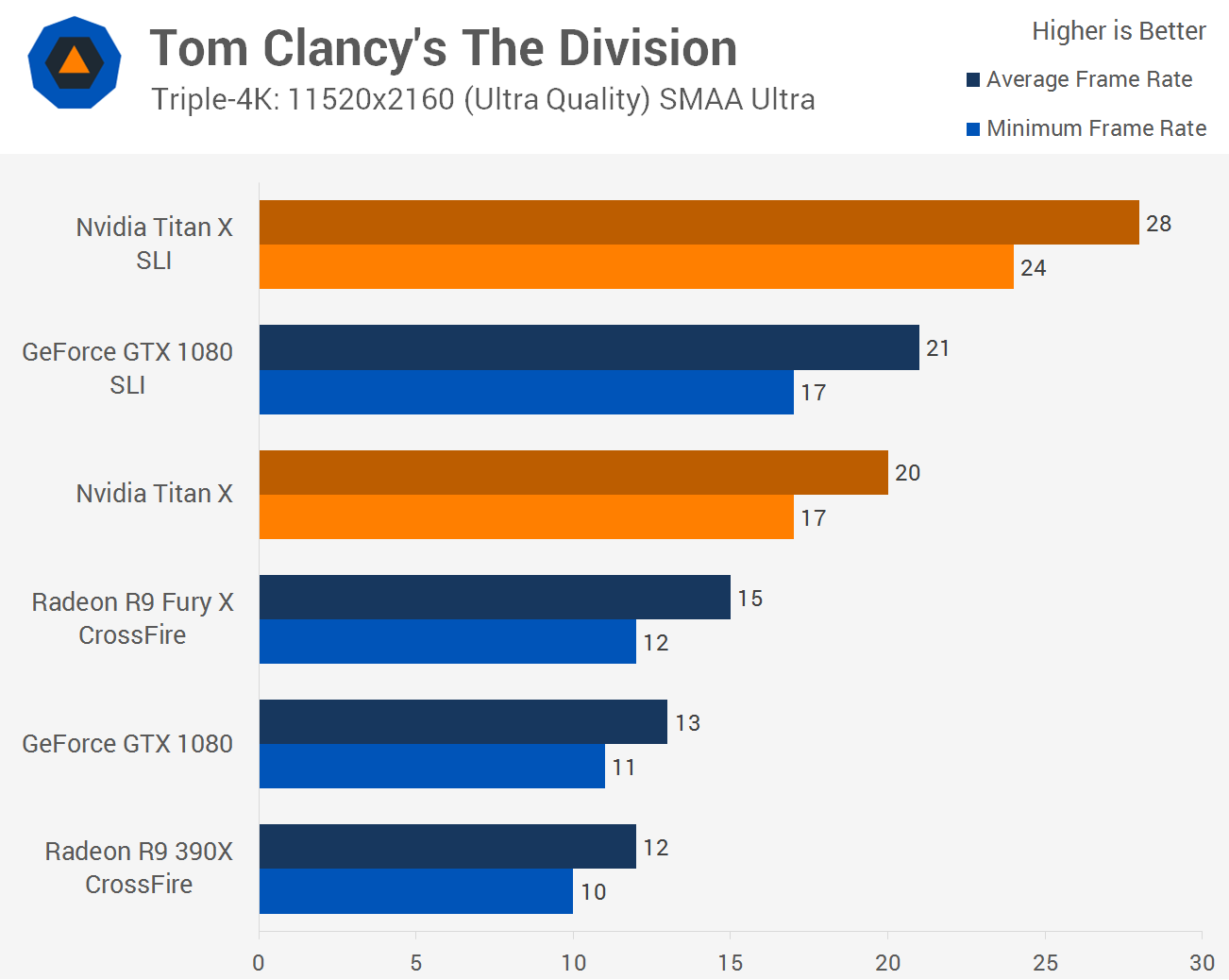
Unfortunately, no matter how much you spend on GPUs it looks like triple-4K gaming in The Division is just fantasy for now. SLI scaling improved performance by 40% but that meant going from an average of 20fps to just 28fps, so not exactly playable performance.
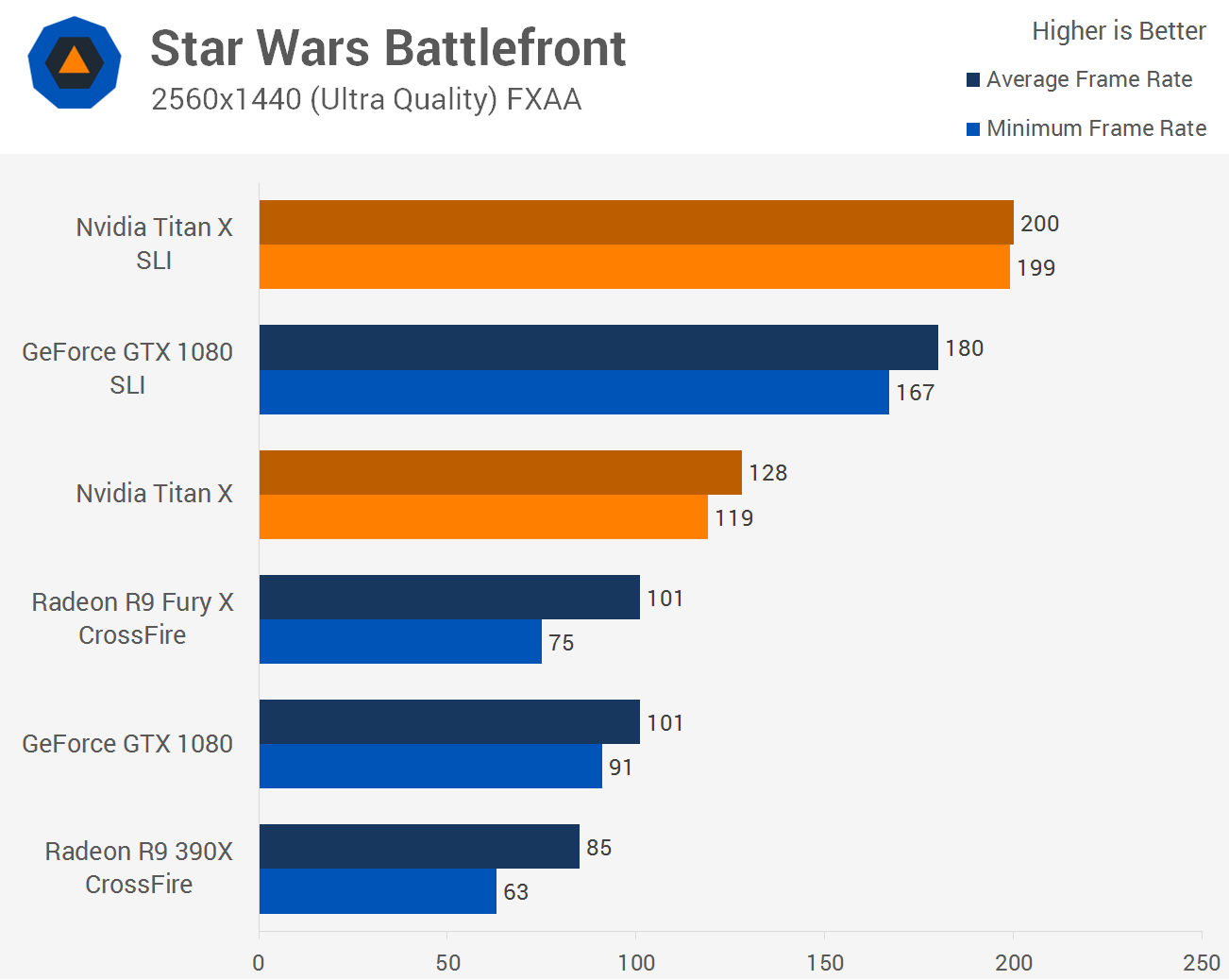
SLI scaling improves in Star Wars Battlefront. Here the Titan X duo provides an impressive 200fps on average or 56% faster than a single card. Clearly there was even more performance to be had as the minimum frame rate only dropped to 199fps. That being the case, I expect SLI scaling to improve at 4K.
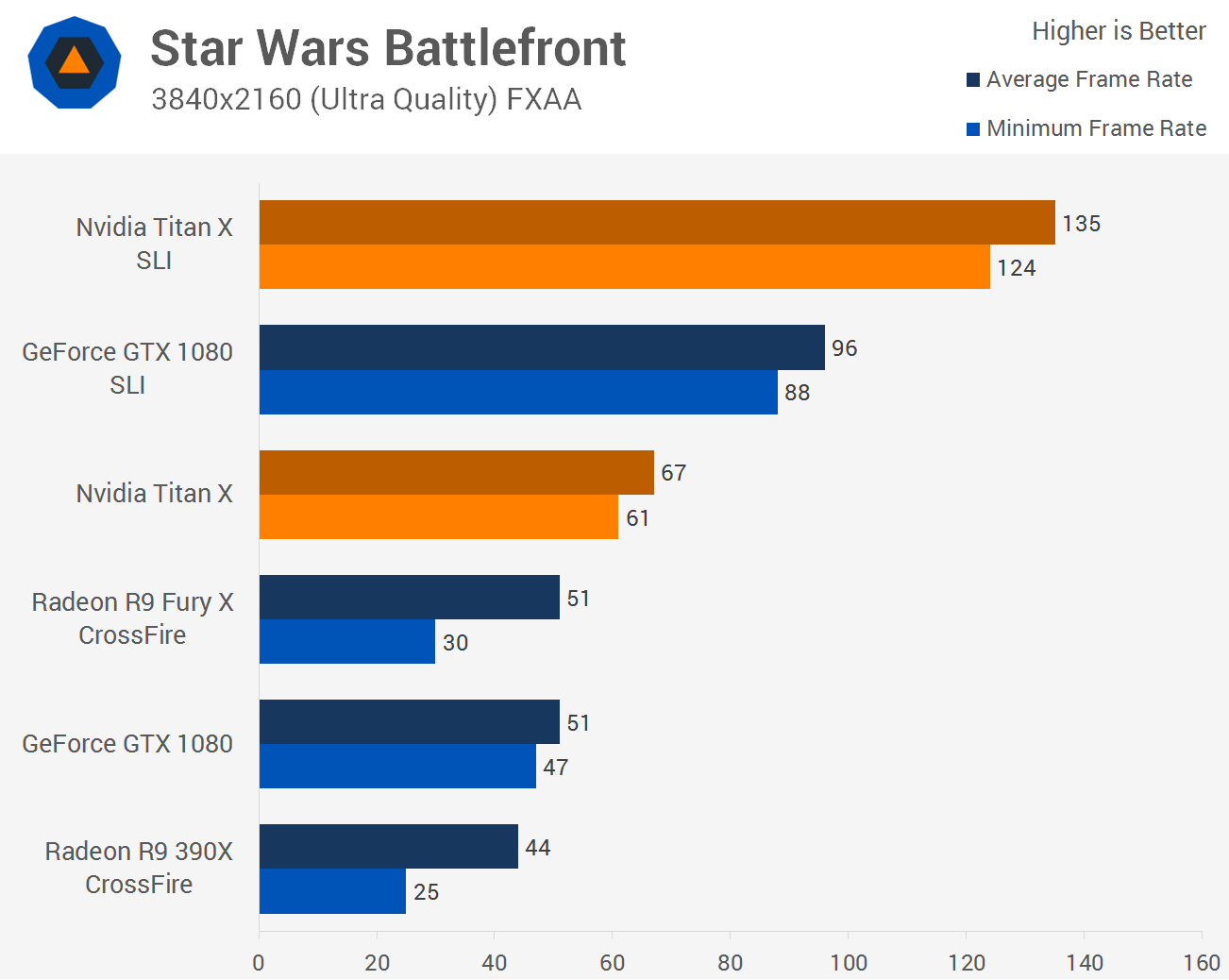
Finally, we see some truly impressive results. This time the Titan X SLI configuration provided 100% more performance than a single card. This allowed an average of 135fps at 4K which it has to be said it quite incredible.
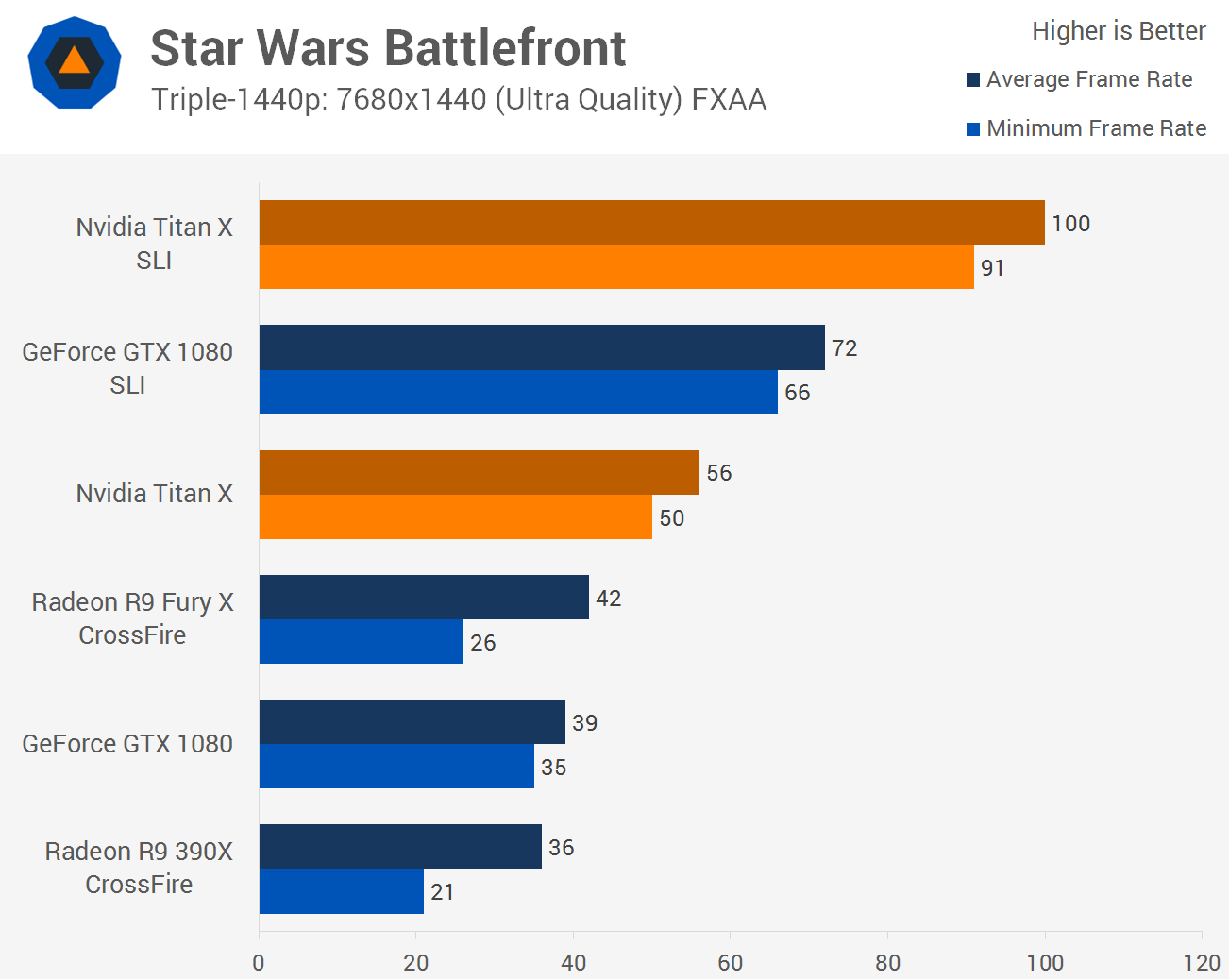
Even with triple 1440p monitors the Titan X duo is able to push 100fps making them almost 80% faster than a single Titan X.
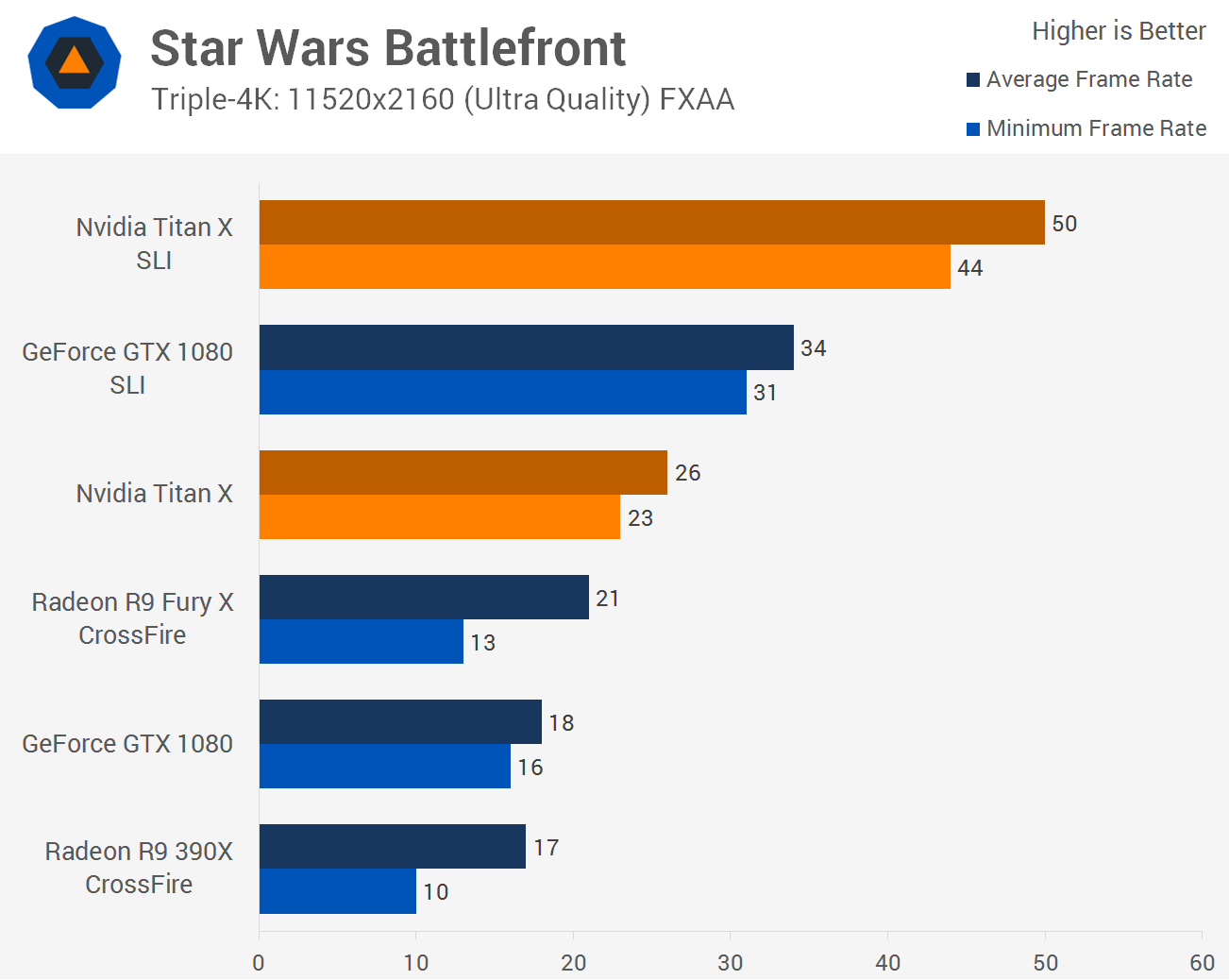
Driving three 4K displays while maintaining an average of 50fps is pretty special. The Titan X combo never dipped below 44fps and as such had no trouble delivering playable performance. SLI scaled by 92% here taking the frame rate from 26fps to 50fps.
